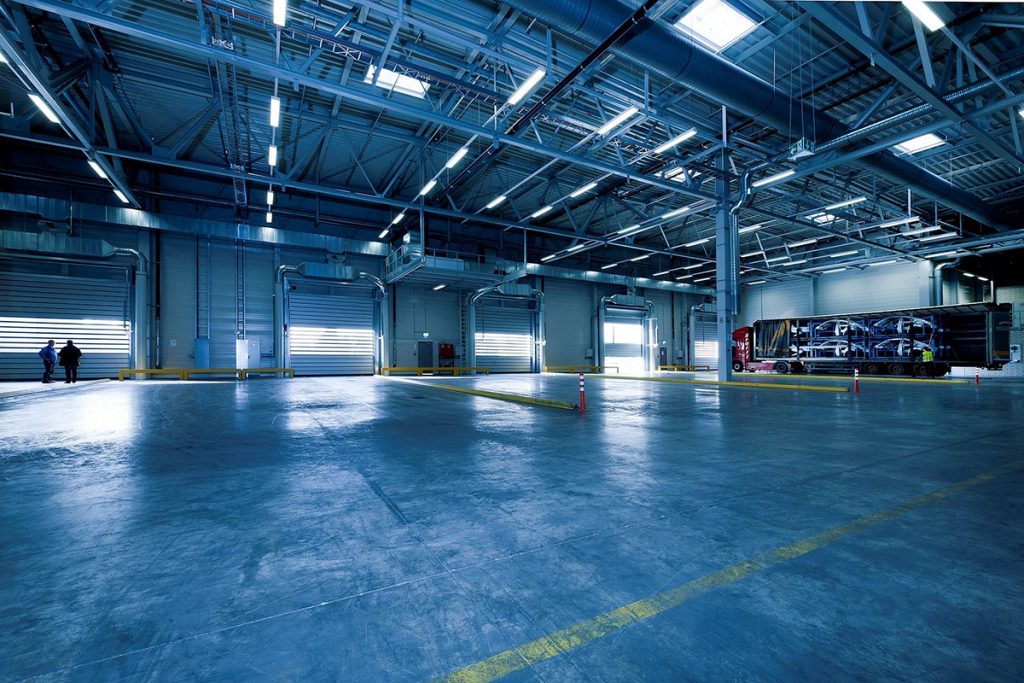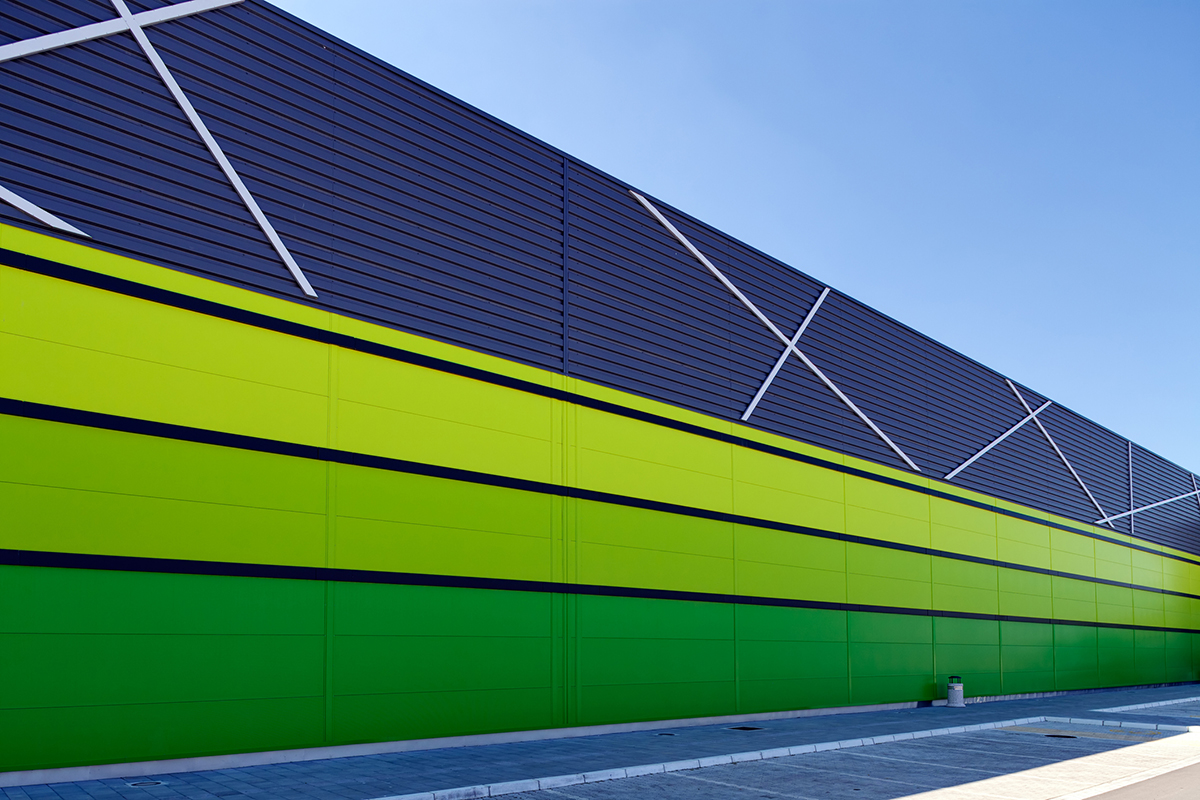A building solution that “saves a fortune in time and labour”
Metal composite panels are becoming a commercial builder’s dream. Lightweight, structurally tough and watertight, they can be erected very quickly and provide the ultimate U value. The internals, such as flooring and fit-out, and external fixtures such as screening can be worked on simultaneously, saving a fortune in time and labour.
Add to this the fact that the panels’ lack of weight means further savings on the cost of designing and laying foundations, and it’s no wonder that the last few years have seen a rapid increase in their usage.
However, despite the gradual lifting of restrictions imposed due to Covid-19, some construction sites remain closed because of an inability to source materials from abroad. Which is where British manufacturers come in.
Manufacturing capacity here in the UK
Supply chains are drying up. A lot of metal-faced panels are made in Poland, the Czech Republic, France and Italy and it’s hard to get them at the moment.
There couldn’t be a better time to include a British panel manufacturer in your supply chain if you are a commercial building developer.
Hemsec is one of the largest panel manufacturers in the UK, offering high quality, high volume supply. The company is seeing a rapid growth in enquiries from the commercial construction sector, and is a member of the Made in Britain movement as a way of underpinning its reputation for the highest quality.
Structural engineering input is invaluable at many levels during a project
“Once we have ascertained the requirement for the building and its location,” says commercial manager Chris Griffin, “one of our structural engineering partners creates the technical specification, which allows us to manufacture to order and deliver in a surprisingly short timeframe, meaning that customers can keep going right now, whatever they are developing: huge retail storage sheds, livestock buildings, food manufacturing factories, shopping centres, schools, hospitals and so on.”
The process of creating the technical specification is crucial. As Chris explains: “When Hemsec receives an enquiry, our engineering partner works with our customer on the specification. Our structural engineer liaises between Hemsec and the customer’s engineer to get information such as the drawings of what the building will look like, and where they want the panels installed.
“Our engineer finds out how high they want the walls to be from the ground to the top of the structure and where the building is situated so he can work out the wind load for that particular site, the internal temperatures needed and so on. After so many years as a specialist in this arena, our engineering partner adds more information based on the practicalities of any given site and situation, to make doubly sure the correct panels are ordered. Theoretical working is all very well, but it’s practicalities that make a sound building.”

Insurance requirements covered by in-depth calculations to ensure structural strength
One example is of a chicken farm near the North West coast of England, where the customer needed large incubation rooms to be kept within strict temperature ranges. The calculations provided by our engineer were critical for many reasons – not least of which was for insurance purposes.
“Most panel manufacturers have load span tables, but they are not enough to enable the customer to buy the right product these days,” Chris says.
“Most of these large commercial projects need more in-depth calculations as an insurance requirement. In the past, there have been a lot of structural building failures due to things like storms and when insurance companies came to check the buildings, they uncovered a distinct lack of calculations which, had they been made, would probably have prevented the failure. So, nowadays a building without adequate calculations is probably uninsurable.”
Unique in-built aesthetic/rain screen finishing saves time, labour and money
Another benefit that Hemsec offers is a way of replacing the need for secondary rainscreen cladding on buildings requiring an architectural finish, which saves time, labour and money. Hemsec offers an option to finish the steels with a colour coat, so that the panel can come with an external, architectural finish on it, including a leather grain emboss.
“Big retail storage warehouses just need panels, but most other commercial buildings require all sorts of other finishes which need fixing to the panels,” explains Chris. “The finishes are utilised to create not just rain protection, but also aesthetic decoration in a range of colours and are very important to architects and building designers who need to take a whole range of factors into consideration.
“The application of building finishes involves a second engineering operation and very few panel manufacturers can offer both the products and the solution; Hemsec can.”
Fire rating requirements supported by lack of soft linings
Hemsec panels and finishes also comply with fire rating requirements. Hemsec’s structural engineers sometimes get involved in projects where combustible materials are being taken off and replaced with aluminium and stainless steel panels with no soft linings. These panels give the U value the customer needs, and massively reduce the fire risk.
Hemsec foresees the expansion of home-tourism in the UK and believes there will be additional requirements for leisure buildings.
“Developers can’t just ask for a brochure or visit a website and expect to get all the information they need to order building panels,” Chris concludes. “Engineering specialists working with insulated panel and screen manufacturers such as Hemsec will provide them with the range of expertise they need for the most economic, best insulated and structurally sound solution, which complies with today’s rigorous compliance requirements.”
Owen Jones
Marketing Developer
Hemsec
Tel: +44 (0) 151 426 7171
Please note: this is a commercial profile.














